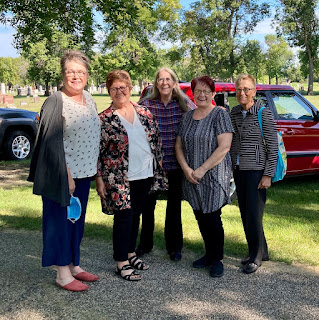Saturday, August 29, 2020
The Power of Words
The recent ‘Texas Monthly’ magazine carried a long article about Willie Nelson where several of his acquaintances spoke about him. Here is what Rodney Crowell said when he went to visit him. It is a good example of the power of words forming an image that’s hard to forget. -
“And as we drive up, I see this Camaro out in the middle of this field, just cutting doughnuts and spinning around as fast as it could. I said, ‘God, what’s going on out there?’ The driver said, ‘Guess who’s driving that car?’ I had no idea. ‘Bee Spears, maybe?’ He said, ‘No, that’s Stevie Wonder.’”
He Paid for Reneging
Friday, August 21, 2020
The Phantom General
Tuesday, August 18, 2020
Funeral for Richard Paulson
Monday, August 17, 2020
Table Talk
Saturday, August 15, 2020
August 15, 2020
Two Forts Named Ransom
Thursday, August 13, 2020
Shadows Basketball 56-57


A record of 16 wins and six losses was made by the Sheldon High School Shadows in the 1956-57 high school basketball season. With their coach, Robert Griffin, at left, the squad members are, left to right, Lynn Bueling, Ron Hoff, Roger Evanson, Gary Young, George Bunn, Co-Captains Vern Spitzer and Lance Bueling, Denis Good, Darold Good, Dick Schroeder, Darrell Evanson, and Student Manager Dale Bunn. The trophy was won by placing second in district play.
(I am aware of two of this group who have passed - Darold Good and Dale Bunn. As for others, I haven’t heard. Mr. Griffin would be quite elderly by now if alive. Maybe someone can bring us up to date on others, such as Gary Young and Denis Good.)
Monday, August 10, 2020
Thursday, August 6, 2020
Hiroshima
Today, August 6, 2020, marks the 75th anniversary of the atomic bomb exploding over Hiroshima. Articles in today’s Washington Post tell of how it took a reporter, John Hersey, walking among the ruins a year later and visiting with the survivors to tell the real story of the suffering it brought. He filled one issue of The New Yorker magazine with 30,000 words titled “Hiroshima.”
“A panel of journalists and critics ranked it first on a list of the top 100 works of journalism in the 20th century…Many historians and foreign policy experts say its impact was profound enough to help prevent future use of nuclear weapons.”
I’ve not read Hersey’s story but will go back and do so.
American Citizens Need to Know History
American Heritage JFK - February 1964 Volume 15 Issue 2 President Kennedy, who now so prematurely and tragically belongs to history,...
-
I watched a powerful true story yesterday on Netflix called “Agent 24.” It’s about a Norwegian man and the resistance he led against the Na...
-
On this first cold wintery day I will share my latest attempt at poetry. He Didn’t Want to Leave His Farm He didn’t want to leave his farm...
-
What? A baseball player worth $700,000,000 … The Christmas season has given itself over to commercialization. Not much of a religious feelin...






